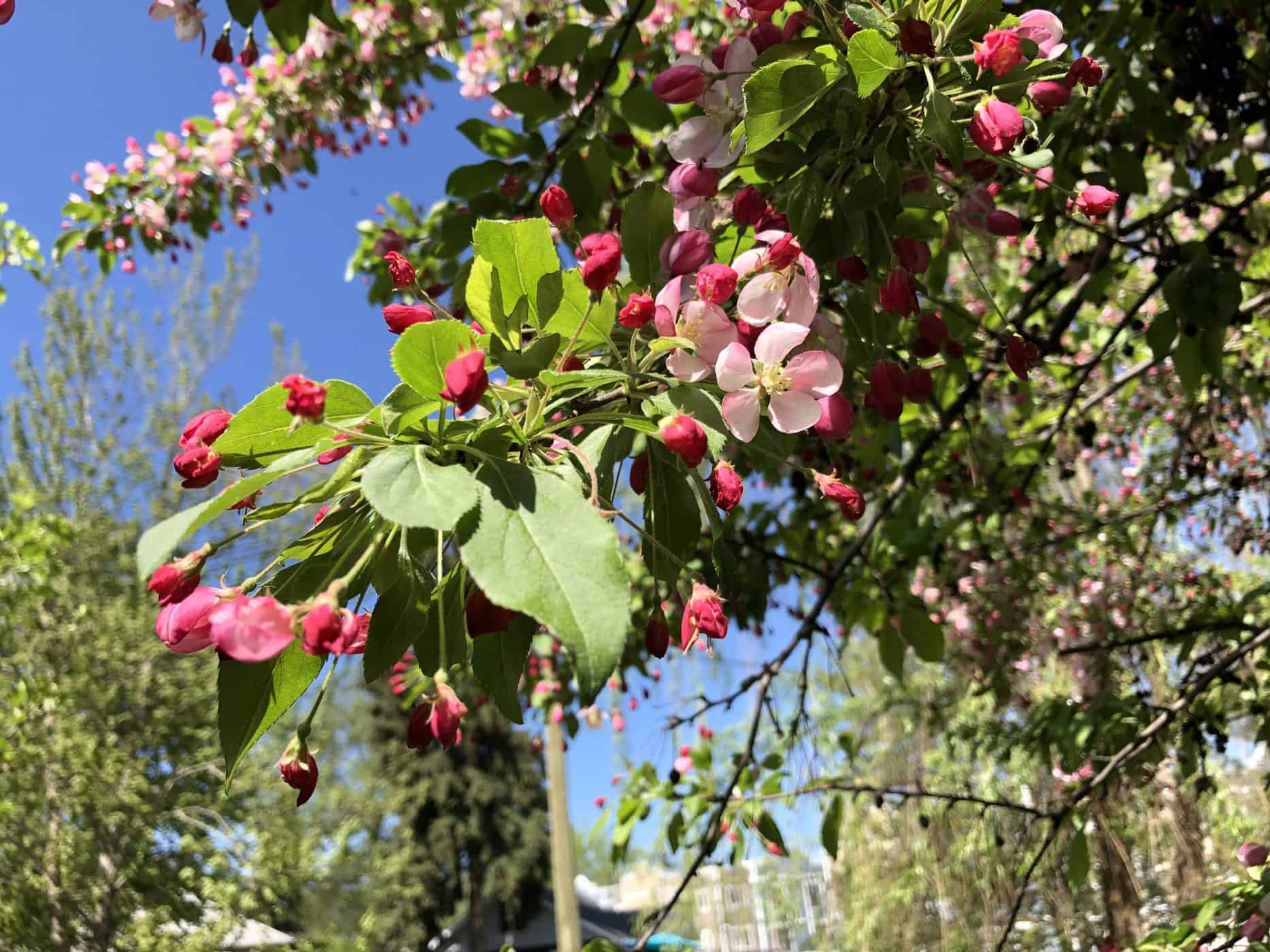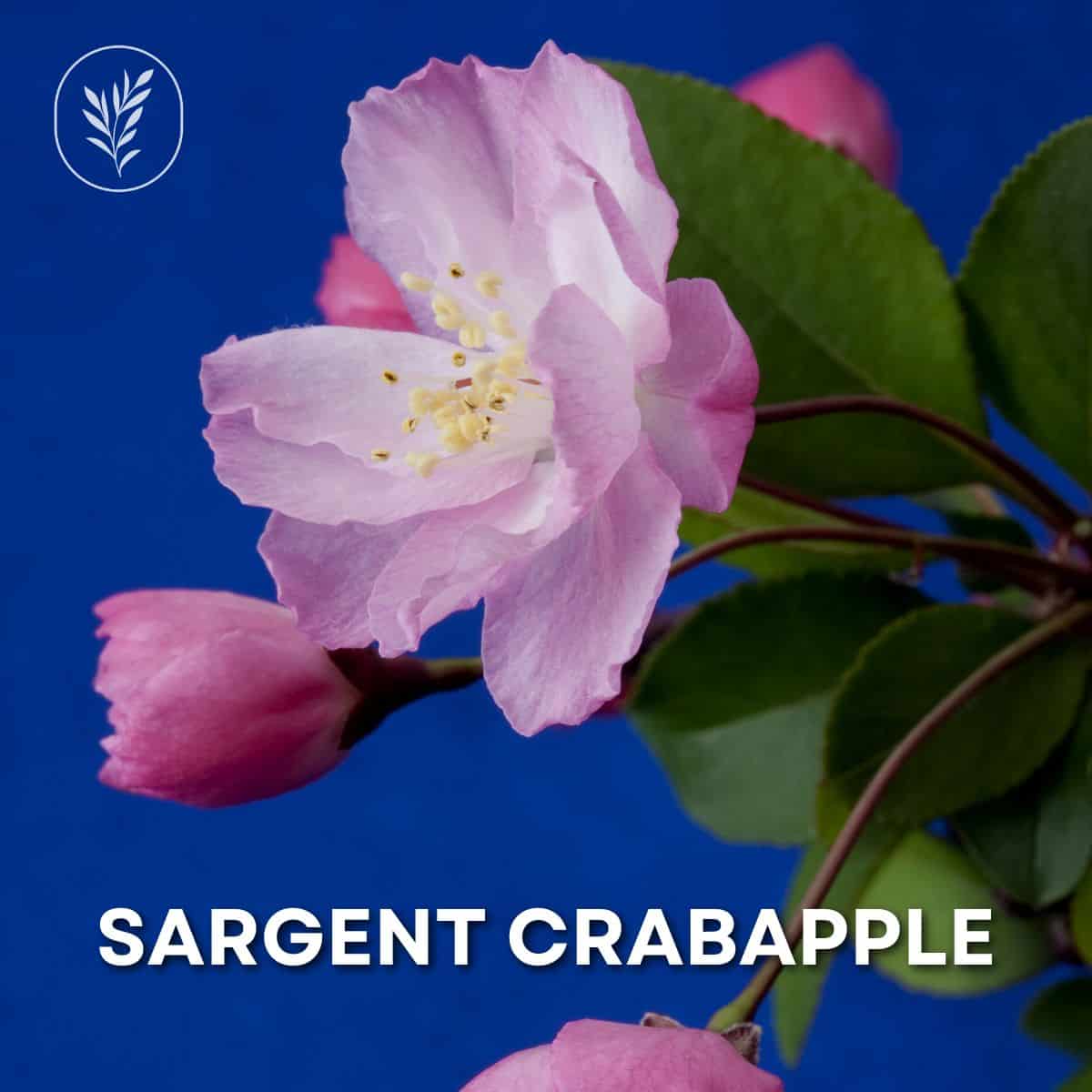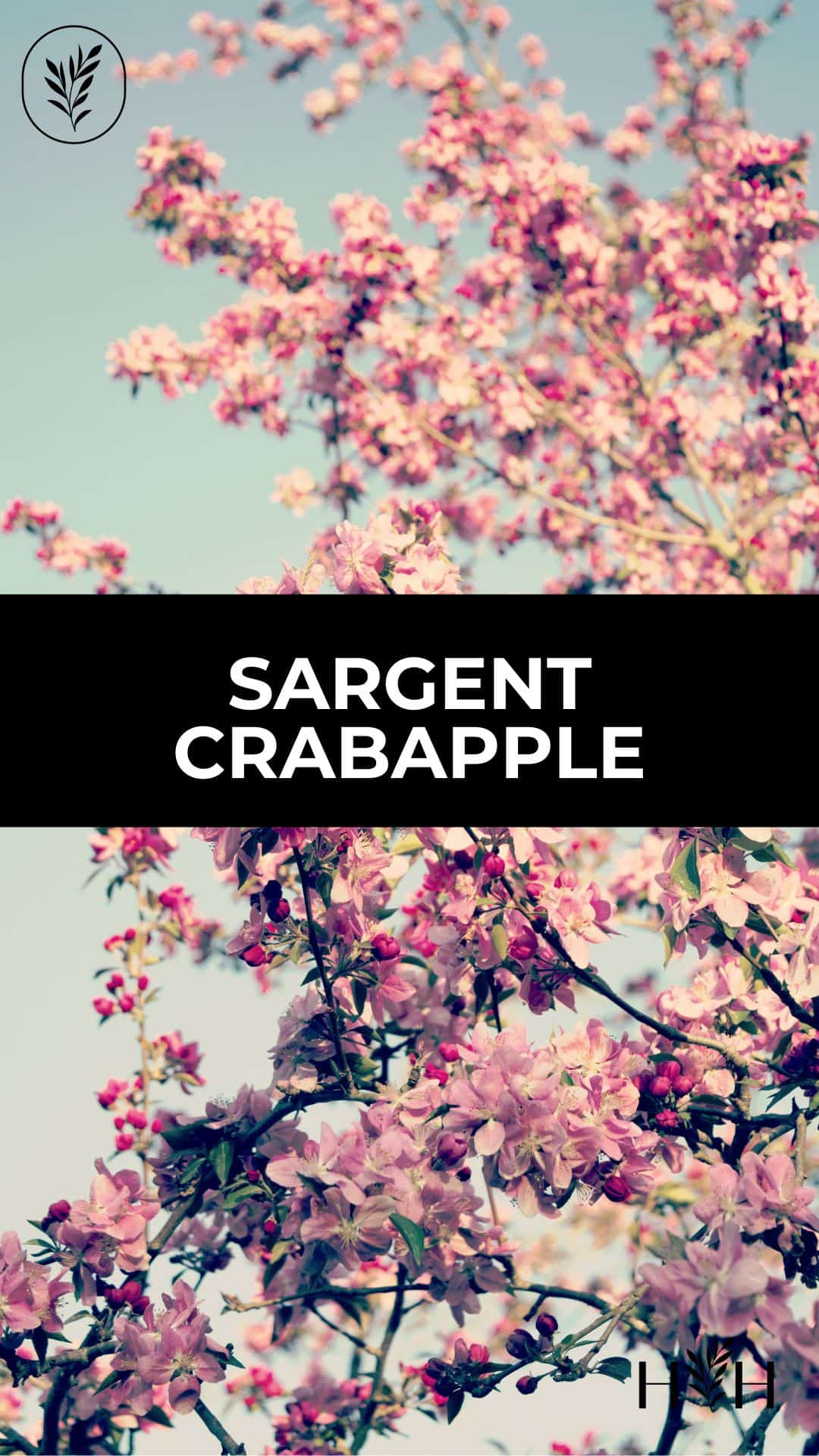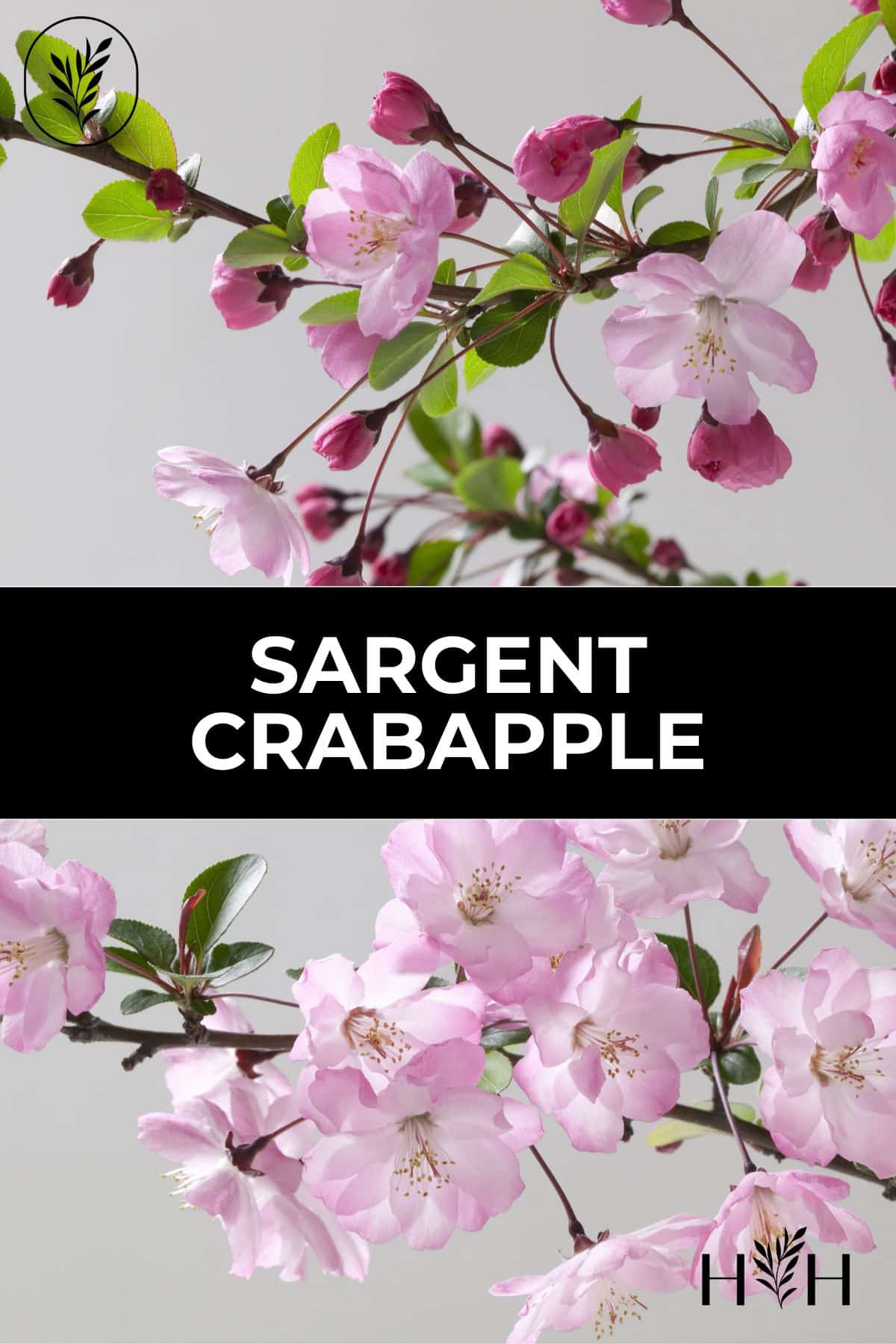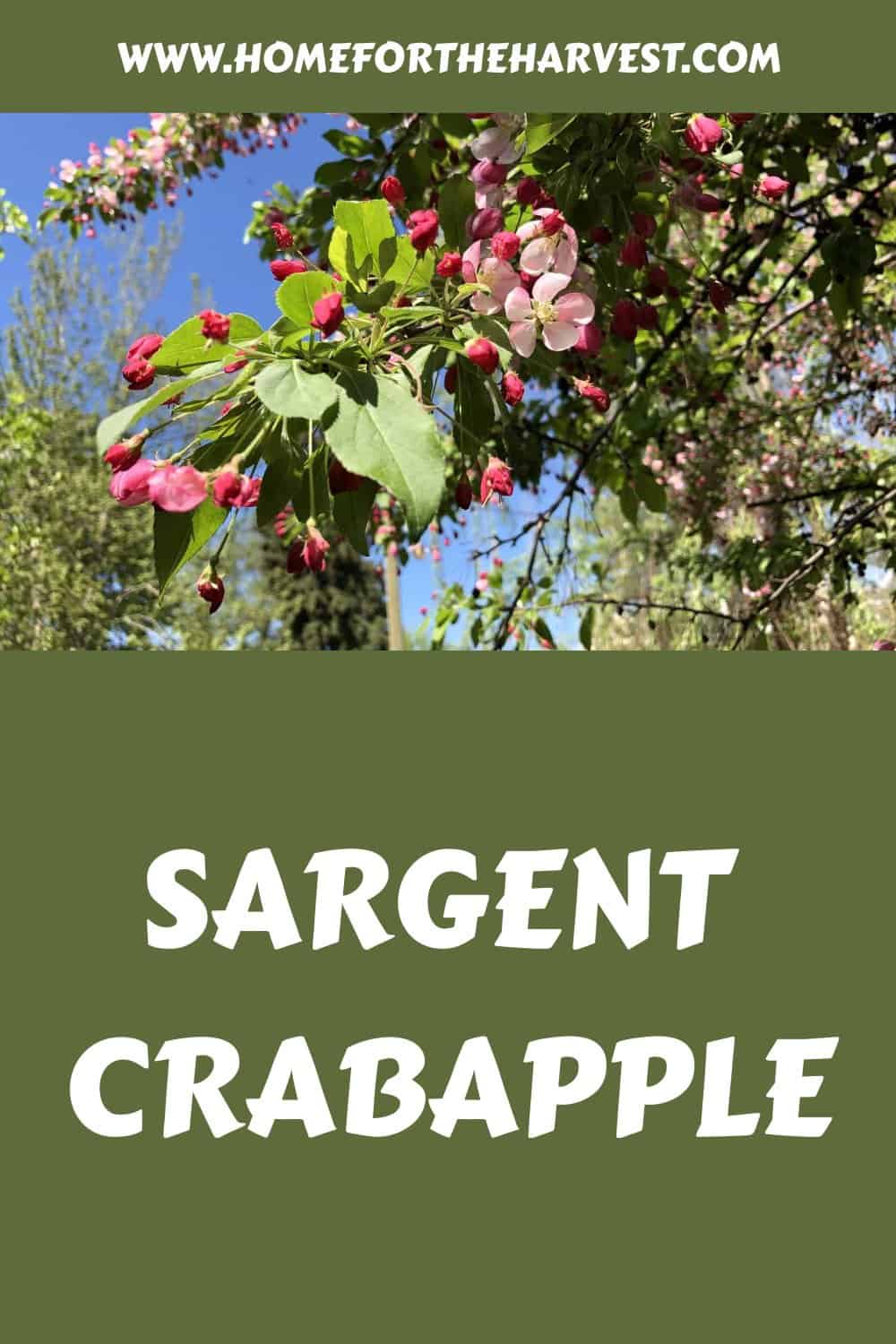The Sargent Crabapple is a lovely, small landscaping tree that’s perfect for residential yards. This plant is low-maintenance, beneficial to pollinators, and puts on a beautiful show of spring blossoms. Here are some of the key features of the Sargent Crabapple as a residential landscaping tree:
- Very little maintenance required beyond basic pruning
- Mature height of ~10′ gives maximizes privacy screening for maintenance efforts
- Pink buds form in April, bursting into white blooms in May
- Wonderful habitat for bees, butterflies, and hummingbirds
Read on to learn all about the Sargent Crabapple and why its an excellent landscaping tree for your yard!
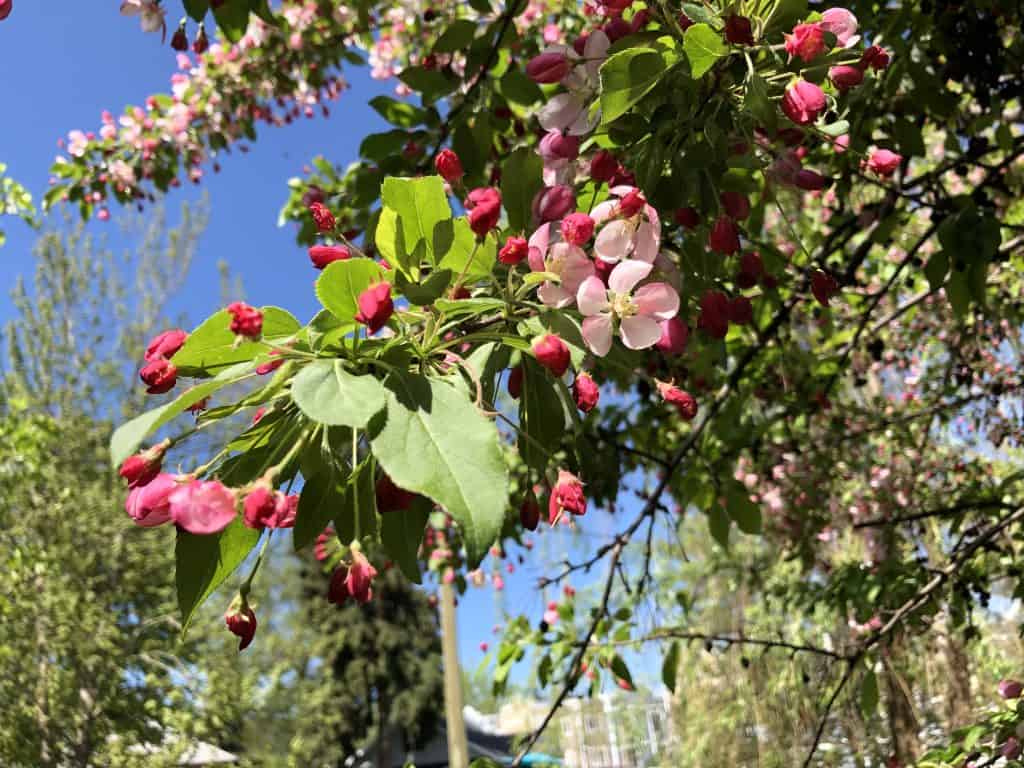
The Sargent crabapple: An introduction
The Sargent Crabapple, also known as Malus sargentii, is a popular landscaping tree around houses and parks due to its stunning spring blooms and relatively low-maintenance care requirements. These trees generally grow about 6′-12′ in height (depending on conditions), and often grow as wide as they do tall.
During springtime, the tree grows buds that are deep pink in color. They eventually become white flowers and are known for the pleasantly fragrant aroma that they are capable of spreading. Though the individual flowers are just about an inch wide, they grow in large clusters making them look quite beautiful. The flowers really do seem to cover the whole tree!
In many areas, the Sargent Crabapple flowers in mid-May, along with standard fruit-bearing apple trees. This timing often happily coincides with Mother’s Day. The Sargent Crabapple starts to bloom just as the blossoms on the companion plant, the hybrid magnolia, are fading (making them excellent for planning succession blooming).
Once the flowering season is over, the tree grows small fruit that is red and shiny. They look attractive just before fall and provide a source of food for local birds. The green leaves fade and turn yellow in color and then they drop off from the tree. The combination of yellow leaves and red fruits makes a stunning appearance. Fortunately, both the leaves and fruits are very small and are easy to rake up as part of your fall yard work.
“Densely branched. Leaves broadly oval, sharp-tipped, heavy, bright green, lobed, serrated edges. Flowers white, single, fragrant, in spring. Fruit tiny, crimson to purple.”
Malus sargentii (Sargent’s Crabapple), Trees and Shrubs: A Gardener’s Encyclopedia, by Geoff Bryant and Tony Rodd
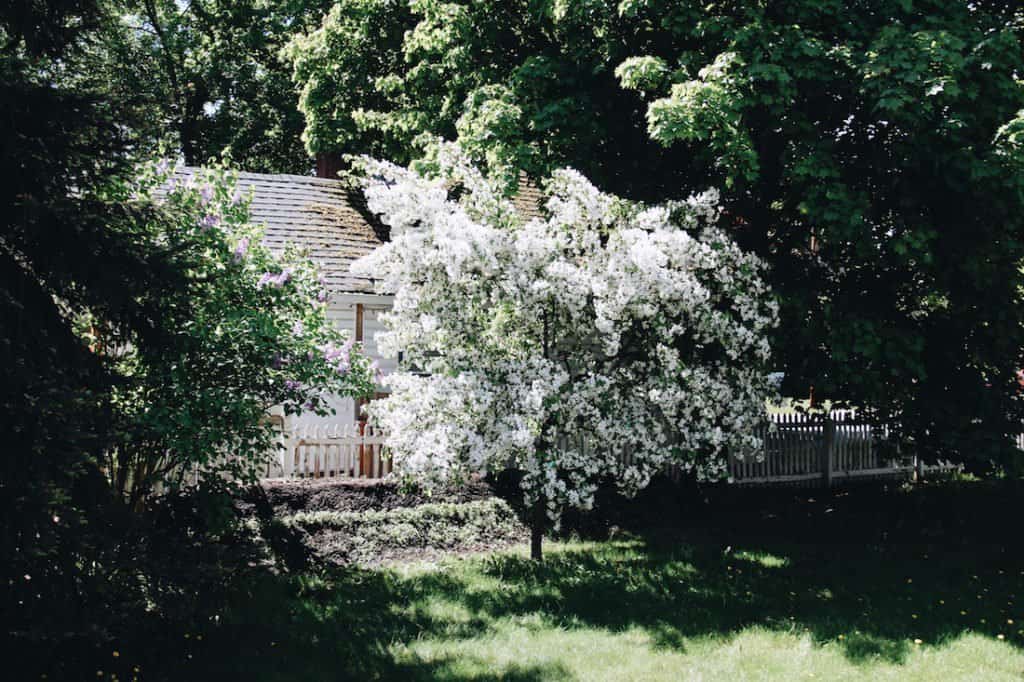
Buying a Sargent crabapple tree
Sargent Crabapples are generally easy to find at local nurseries and online. They can be purchased as tiny young trees or (less commonly) as large trees approaching full-grown height. They can be purchased as a potted tree, a burlap-wrapped root ball tree, or as bare-root tree.
Young Sargent Crabapples are generally around $50, while taller trees can be over $100. These trees are less expensive than some other small ornamental landscaping trees like flowering magnolias and Japanese maples.
Growing a Sargent crabapple tree at home
There are a few more reasons as to why it has become a famous landscaping tree. These trees are generally easy to find, affordable to buy, and easy to grow. It does not require too much maintenance and upkeep. All it requires is an open location with full sun.
Sargent Crabapple trees grow best in soil that is acidic and also is rich in organic matter. However, the good thing about this tree is that it can adapt and grow in different types of soil. It is not a demanding plant and will be able to tolerate soils that are less than ideal. At the same time, crabapples in general cannot survive in drought-like conditions for extended periods of time.
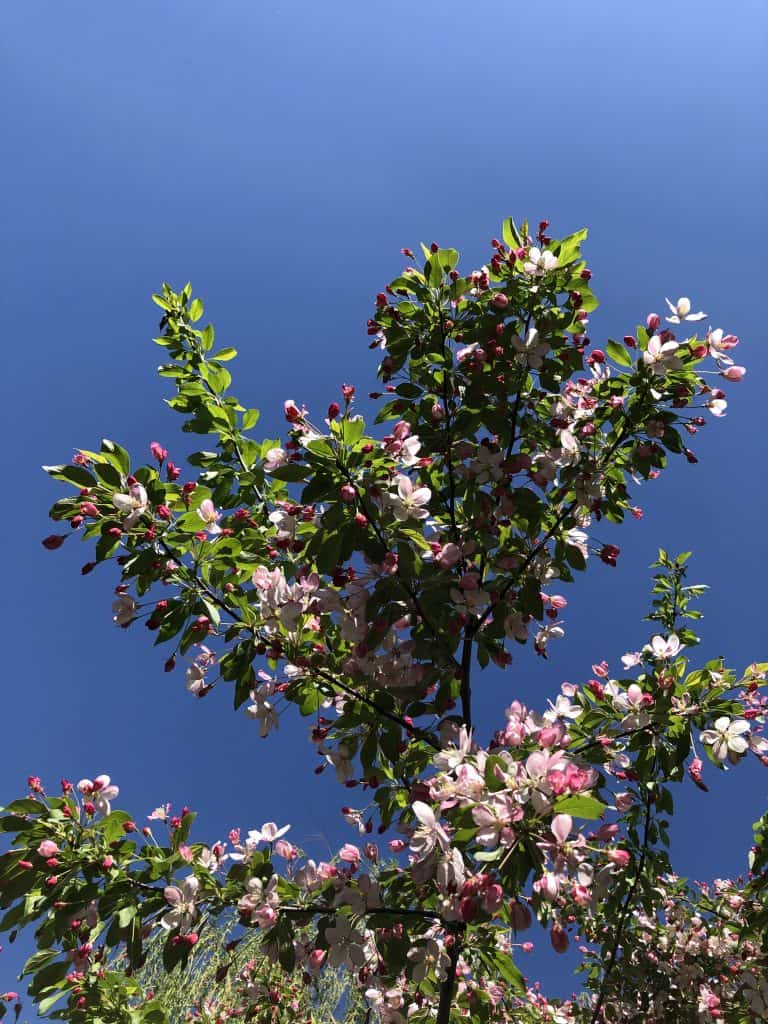
Caring for Sargent crabapple trees
Sargent Crabapple trees are generally low maintenance. But as mentioned above it will not be able to tolerate drought/lack of moisture. Keep the tree well-watered during dry spells in the summertime. Rake up fallen leaves and fruit before snowfall as part of your Fall Yard Clean-Up Routine.
Also, note that this tree puts on different-sized crops in alternate years. One year may have A TON of blooms, while the next year is nothing noteworthy. This is normal and not a result of a maintenance deficiency.
These trees generally flourish without the use of fertilizer products. Ours gets a bit of homemade compost on the surrounding soil now and then but seems perfectly happy either way.
Pruning a Sargent Crabapple is similar to pruning other fruit trees. Any branches that are dead, dying, diseased, or damaged should be pruned off the tree as soon as they are noticed. In late winter/early spring, you can do a maintenance prune to remove limbs that rub on other limbs, limbs that grow inwards, and some limbs from overly crowded areas.
Read More: The Best Time to Prune Trees
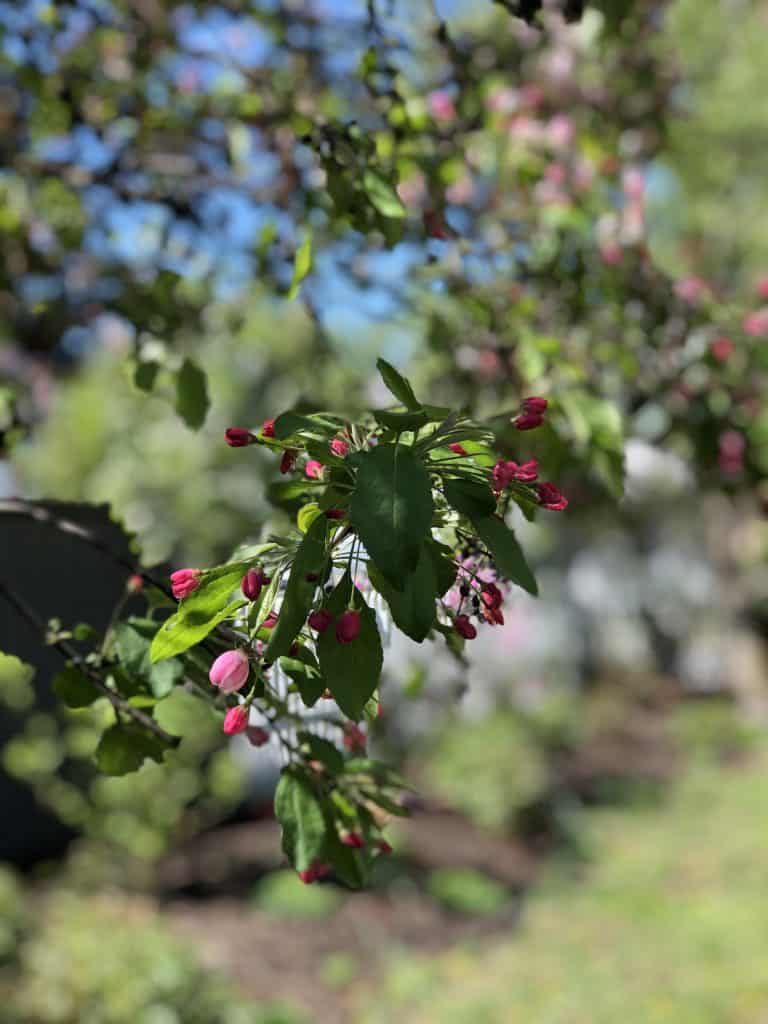
The Sargent crabapple as a residential ornamental tree
There are many reasons for choosing Sargent Crabapple as a deciduous ornamental tree for your yard. It will go a long way in making your entire garden and backyard look lovely in the springtime – without adding too much to your yard workload in the way of maintenance.


